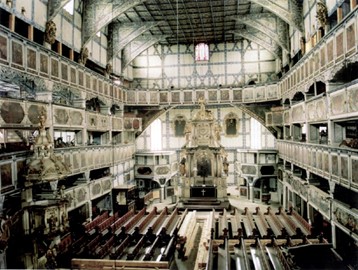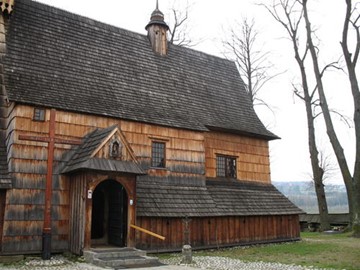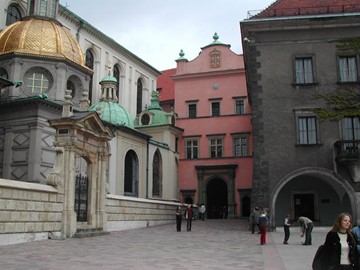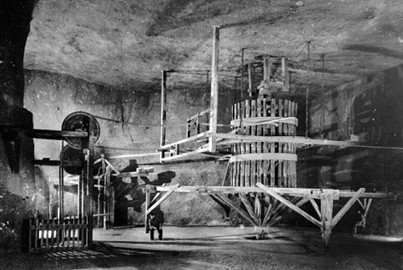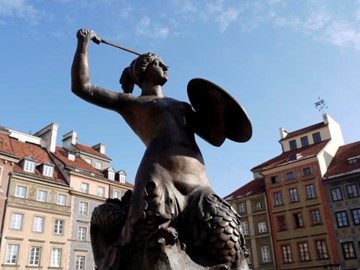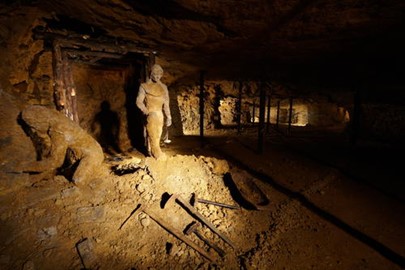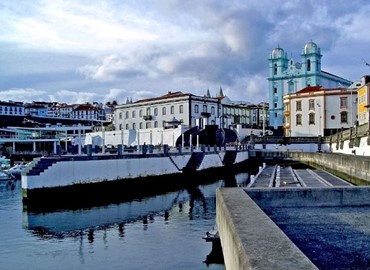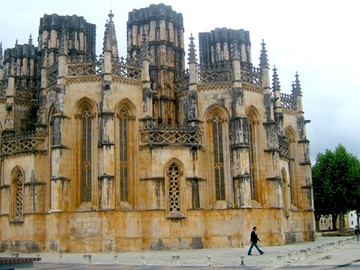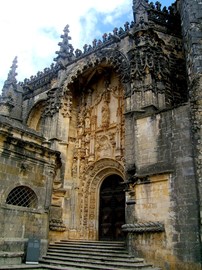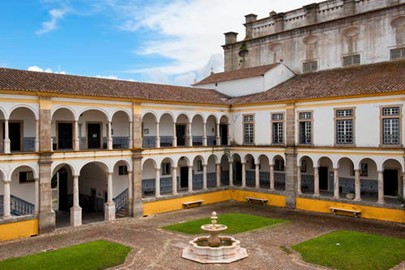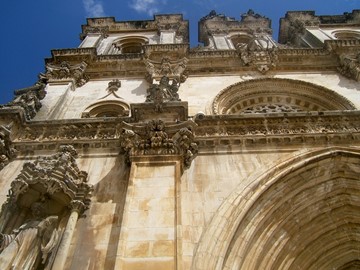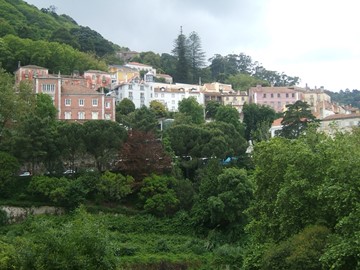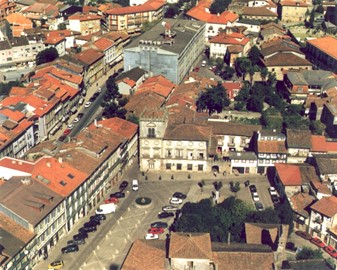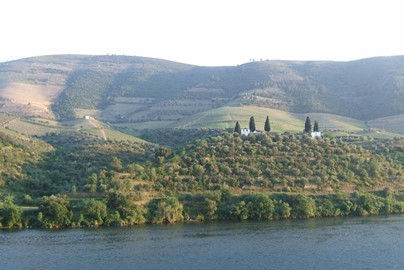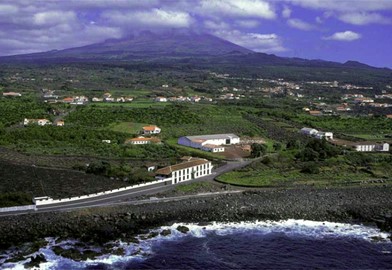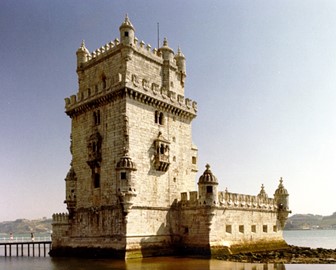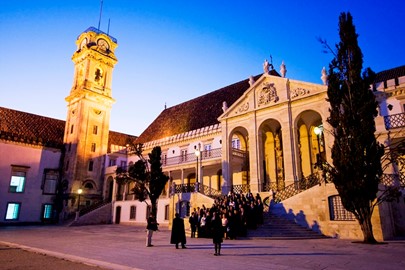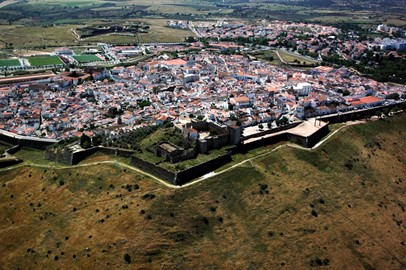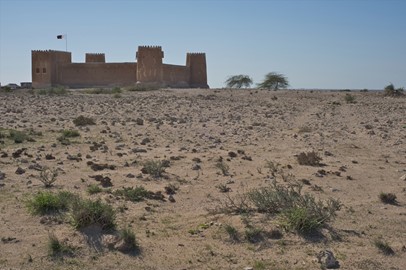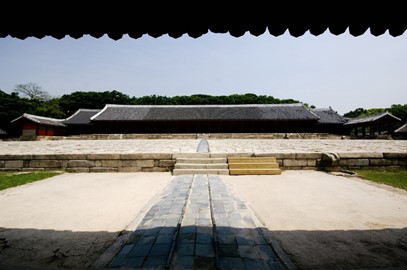category :: cultural
Kalwaria Zebrzydowska
Kalwaria Zebrzydowska, a UNESCO World Heritage Site in Poland, is a remarkable 17th-century Mannerist architectural and park landscape complex designed as a pilgrimage park. Founded by Mikołaj Zebrzydowski, it features a Baroque basilica, a Bernardine monastery, and 42 chapels scattered across a scenic landscape, symbolizing the Passion of Jesus Christ and the life of the Virgin Mary. Recognized in 1999 for its cultural and spiritual significance, it remains a vital pilgrimage destination, blending natural ... Read More
Churches of Peace
The Churches of Peace in Jawor and Świdnica, recognized as a UNESCO World Heritage site, are remarkable wooden structures built in the 17th century by the Protestant community under restrictive conditions imposed by the Holy Roman Emperor following the Thirty Years' War. Constructed entirely of wood, clay, and straw without the use of nails, these Baroque-style churches showcase exceptional architectural ingenuity and artistic detail, including intricate interior paintings and ornate altars. They stand as e... Read More
Centennial Hall in Wroclaw
Centennial Hall in Wrocław, Poland, is an iconic World Heritage site renowned for its pioneering reinforced concrete design, completed in 1913 by architect Max Berg. Originally built as an exhibition hall to commemorate the centennial of the Battle of Leipzig, it features a distinctive symmetrical structure with a vast central dome, showcasing early 20th-century engineering innovation. Today, it serves as a multifunctional venue for cultural and sporting events, reflecting its enduring historical and archit... Read More
Wooden Churches of Southern Malopolska
The Wooden Churches of Southern Małopolska, a UNESCO World Heritage site in Poland, are a remarkable collection of medieval Roman Catholic churches built using the horizontal log technique, a method prevalent in Northern and Eastern Europe during the Middle Ages. Constructed between the 14th and 16th centuries, these Gothic-style churches feature intricate polychrome interiors and unique architectural designs, reflecting the craftsmanship and cultural heritage of the region. Sponsored by noble families as s... Read More
Kraków
The Historic Centre of Kraków, a UNESCO World Heritage site in Poland, is renowned for its well-preserved medieval architecture and rich cultural history. This vibrant area features landmarks like the Wawel Castle, a former royal residence, and the Main Market Square, one of Europe’s largest medieval squares, surrounded by colorful townhouses and the iconic St. Mary’s Basilica. The site also includes the historic Jewish quarter of Kazimierz, reflecting centuries of cultural diversity. Its significance lies ... Read More
Wieliczka and Bochnia Salt Mines
The Wieliczka and Bochnia Royal Salt Mines, a UNESCO World Heritage site in Poland, are historic underground complexes renowned for their centuries-long salt extraction history dating back to the 13th century. These mines feature an intricate network of tunnels, chambers, and saline lakes, adorned with remarkable salt-carved sculptures, chapels, and artworks created by miners over generations. They stand as a testament to human ingenuity and industrial heritage, offering a unique glimpse into medieval minin... Read More
Warsaw
The Historic Centre of Warsaw, a UNESCO World Heritage site in Poland, is a remarkable example of a meticulously reconstructed urban area, reflecting its resilience after near-total destruction during World War II. This vibrant district showcases a blend of architectural styles, including Gothic, Renaissance, and Baroque, with key landmarks like the Royal Castle and St. John’s Cathedral highlighting its rich history. Recognized for its cultural and historical significance, it stands as a testament to human ... Read More
Tarnowskie Góry Mine
The Tarnowskie Góry Mine, a UNESCO World Heritage site in Poland, is a historic underground complex renowned for its well-preserved silver, lead, and zinc mining infrastructure dating back to the 16th century. This extensive network of tunnels, chambers, and drainage systems showcases innovative engineering from the Renaissance and Industrial eras, highlighting the region’s significant contribution to global mining technology. Visitors can explore its unique subterranean landscape, which includes the remark... Read More
Angra do Heroismo
Angra do Heroísmo, located on Terceira Island in the Azores, Portugal, is a UNESCO World Heritage site renowned for its well-preserved Renaissance urban layout and historical significance. Established in the 15th century, it served as a vital maritime hub during the Age of Sail, connecting Europe, Africa, and the Americas. The town features notable architecture, including the São João Baptista Fort and the Sé Cathedral, reflecting its strategic and cultural importance. Its enduring charm lies in its colorfu... Read More
Monastery of Batalha
The Monastery of Batalha, a UNESCO World Heritage site in Portugal, is a stunning example of Gothic architecture blended with Manueline style, constructed in the late 14th century to commemorate a historic military victory. Its intricate stonework, including the Founder's Chapel and the Unfinished Chapels, showcases exceptional craftsmanship and historical significance. The monastery also served as a royal pantheon, housing the tombs of Portuguese kings and nobility. Today, it stands as a well-preserved tes... Read More
Convent of Christ in Tomar
The Convent of Christ in Tomar, a UNESCO World Heritage site in Portugal, is a historic monument renowned for its architectural evolution and cultural significance. Originally founded as a Templar stronghold in the 12th century, it later became the headquarters of the Order of Christ, reflecting a blend of Romanesque, Gothic, Manueline, and Renaissance styles. Its iconic Charola, a 16-sided Templar church, and the intricate Manueline window are standout features, showcasing centuries of Portuguese history a... Read More
Évora
The Historic Centre of Évora, a UNESCO World Heritage site in Portugal, is a well-preserved medieval city showcasing a rich blend of Roman, Gothic, and Baroque architecture. Its notable landmarks include the Roman Temple, the Gothic Cathedral of Évora, and the eerie Chapel of Bones, constructed with human skulls and bones. The city's unique historical and cultural significance, reflecting centuries of Portuguese heritage, makes it a remarkable testament to the region's past.
Monastery of Alcobaça
The Monastery of Alcobaça, a UNESCO World Heritage site in Portugal, is a remarkable example of medieval Cistercian architecture, founded in 1153 by King Afonso Henriques. Its Gothic church, one of the largest of its kind, features intricate stonework and a serene cloister, reflecting the order’s emphasis on simplicity and spirituality. The monastery also houses the tombs of King Pedro I and Inês de Castro, tied to a tragic royal love story that adds historical intrigue. Today, it stands as a well-preserved... Read More
Sintra
The Cultural Landscape of Sintra, a UNESCO World Heritage site, is renowned for its unique blend of natural beauty and historic architecture. This picturesque region features lush hills dotted with extravagant palaces, romantic gardens, and ancient castles, reflecting centuries of aristocratic influence and artistic heritage. Notable landmarks include the colorful Pena Palace and the Moorish Castle, which highlight a fusion of Gothic, Manueline, and Moorish styles. Its well-preserved environment and cultura... Read More
Oporto
The Historic Centre of Oporto, a UNESCO World Heritage site in Portugal, is renowned for its rich history and architectural diversity. This well-preserved urban landscape showcases a blend of medieval, Baroque, and neoclassical styles, reflected in its iconic monuments, churches, and charming riverside district. The area’s cultural significance is tied to its role as a key trading hub and its contributions to Portuguese heritage, making it a treasure trove of historical landmarks and scenic beauty along the... Read More
Guimarães
The Historic Centre of Guimarães, a UNESCO World Heritage site in Portugal, is a remarkably well-preserved medieval town known for its historical significance as the birthplace of the Portuguese nation. Its charming cobblestone streets, granite architecture, and landmarks like the 10th-century Guimarães Castle and the Palace of the Dukes of Bragança reflect a rich blend of Romanesque, Gothic, and Baroque influences. The site’s authenticity and cultural value lie in its role in shaping Portugal’s early ident... Read More
Alto Douro
The Alto Douro Wine Region in Portugal, recognized as a UNESCO World Heritage site, is a historic wine-producing area renowned for its terraced vineyards along the Douro River. Established in 1756 as the world’s first demarcated wine region, it showcases a unique cultural landscape shaped by centuries of winemaking tradition. The area is celebrated for its production of Port wine, a fortified wine that has gained international acclaim, alongside table wines that reflect the region’s diverse grape varieties.... Read More
Pico Island
The Pico Island Vineyard Culture, a UNESCO World Heritage site in Portugal, showcases a unique landscape shaped by centuries of traditional viticulture on a volcanic island. Its distinctive network of black basalt stone walls protects vines from harsh sea winds and salt spray, creating a microclimate for grape cultivation in nutrient-rich lava soil. This ingenious adaptation by generations of farmers, along with historic wine cellars, manor houses, and churches, reflects a remarkable blend of human resilien... Read More
Belém
The Monastery of the Hieronymites and Tower of Belém in Lisbon, a UNESCO World Heritage site in Portugal, represent exceptional examples of Manueline architecture from the 16th century. The monastery, a former religious complex, showcases intricate stonework and maritime motifs, reflecting Portugal’s Age of Discovery, while the nearby Tower of Belém, a fortified structure, served as a ceremonial gateway and defensive outpost along the Tagus River. Both monuments highlight the country’s historical wealth, ar... Read More
University of Coimbra
The University of Coimbra – Alta and Sofia, a UNESCO World Heritage site in Portugal, is renowned for its historical and cultural significance. Founded in 1290, the university is one of the oldest in continuous operation worldwide, featuring stunning architecture like the Joanina Library and St. Michael’s Chapel. Its traditions, including academic rituals and student life, reflect centuries of intellectual heritage, making it a remarkable testament to European education and history.
Elvas
The Garrison Border Town of Elvas and its Fortifications, a UNESCO World Heritage site in Portugal, is a remarkably preserved example of a fortified frontier town. Extensively developed between the 17th and 19th centuries, it features the world’s largest bulwarked dry-ditch system, including star-shaped walls, outlying forts, and the impressive Amoreira Aqueduct, designed to sustain long sieges. Its military architecture, influenced by Dutch, Italian, and French theories, reflects Portugal’s strategic defen... Read More
Al Zubarah
Al Zubarah, a UNESCO World Heritage site in Qatar, is a well-preserved 18th-century coastal town that offers a glimpse into the region's pearling and trading past. Founded by merchants from Kuwait, it flourished as a key trading hub in the Gulf, connecting local communities with global markets through its strategic location. The site features a fortified settlement with remnants of houses, mosques, and a marketplace, alongside a nearby fort built in 1938 for defense. Archaeological discoveries, including po... Read More
Seokguram Grotto and Bulguksa Temple
Seokguram Grotto and Bulguksa Temple, a UNESCO World Heritage site, exemplify Korea's rich Buddhist heritage and architectural prowess. The grotto, an artificial cave carved into granite, houses a serene Buddha statue surrounded by intricately sculpted bodhisattvas, showcasing exceptional 8th-century artistry. Adjacent Bulguksa Temple, a wooden complex, reflects harmonious design with its elevated platforms, ornate pagodas, and tranquil courtyards, embodying spiritual and aesthetic ideals of the era. Togeth... Read More
Haeinsa Temple
Haeinsa Temple, a UNESCO World Heritage site in South Korea, is renowned for its historical and cultural significance as a center of Korean Buddhism. Founded in 802 CE during the Silla Dynasty, it houses the Tripitaka Koreana, an extraordinary collection of over 81,000 wooden printing blocks inscribed with Buddhist scriptures, completed in the 13th century. The temple's Janggyeong Panjeon, a specially designed storage facility, has preserved these blocks for centuries, showcasing remarkable architectural in... Read More
Jongmyo Shrine
Jongmyo Shrine, a UNESCO World Heritage site in Korea, is a Confucian royal ancestral shrine dedicated to commemorating the deceased kings and queens of the Joseon Dynasty. Constructed in 1394 during King Taejo’s reign, it embodies traditional East Asian architectural principles and houses the spirit tablets of royalty in a serene, ritual-focused setting. The shrine hosts the Jongmyo Jerye ceremony, an ancient Confucian rite featuring music and dance, recognized as an Intangible Cultural Heritage. Its histo... Read More

